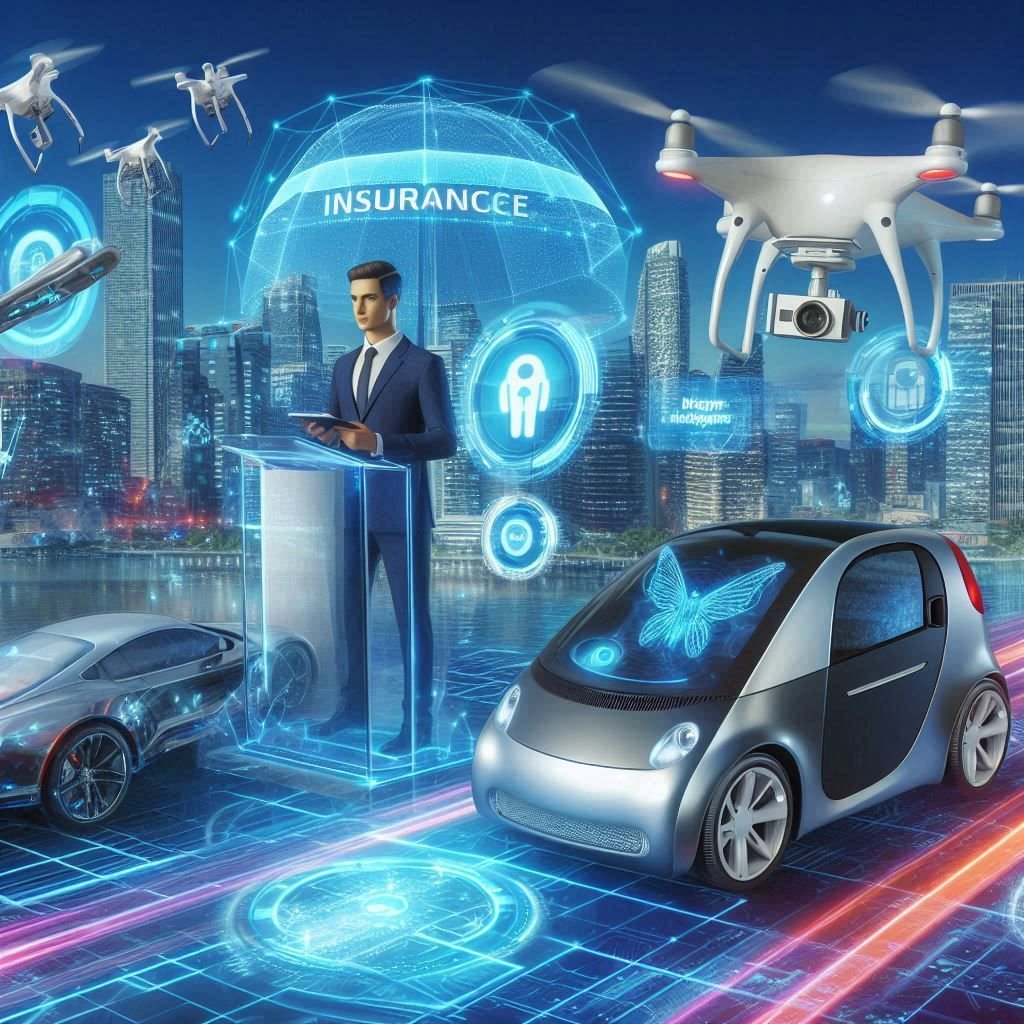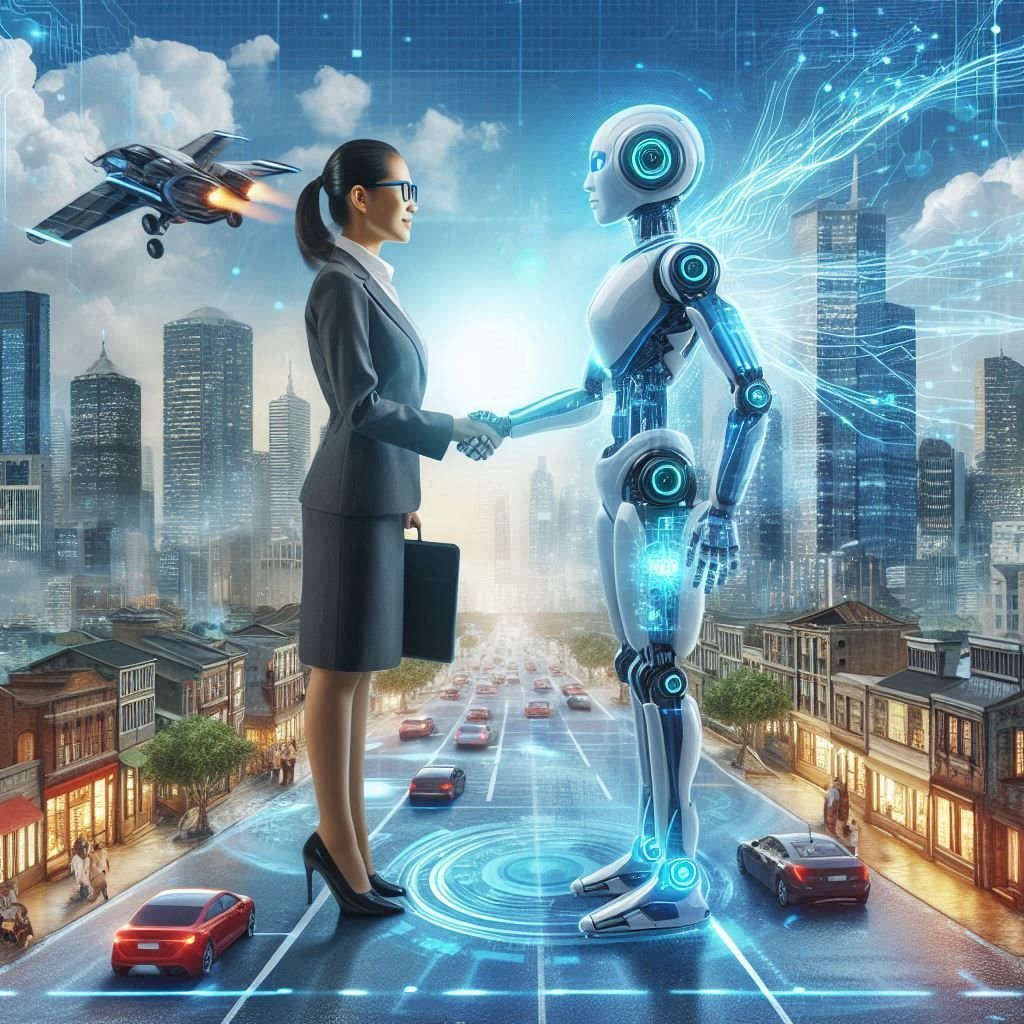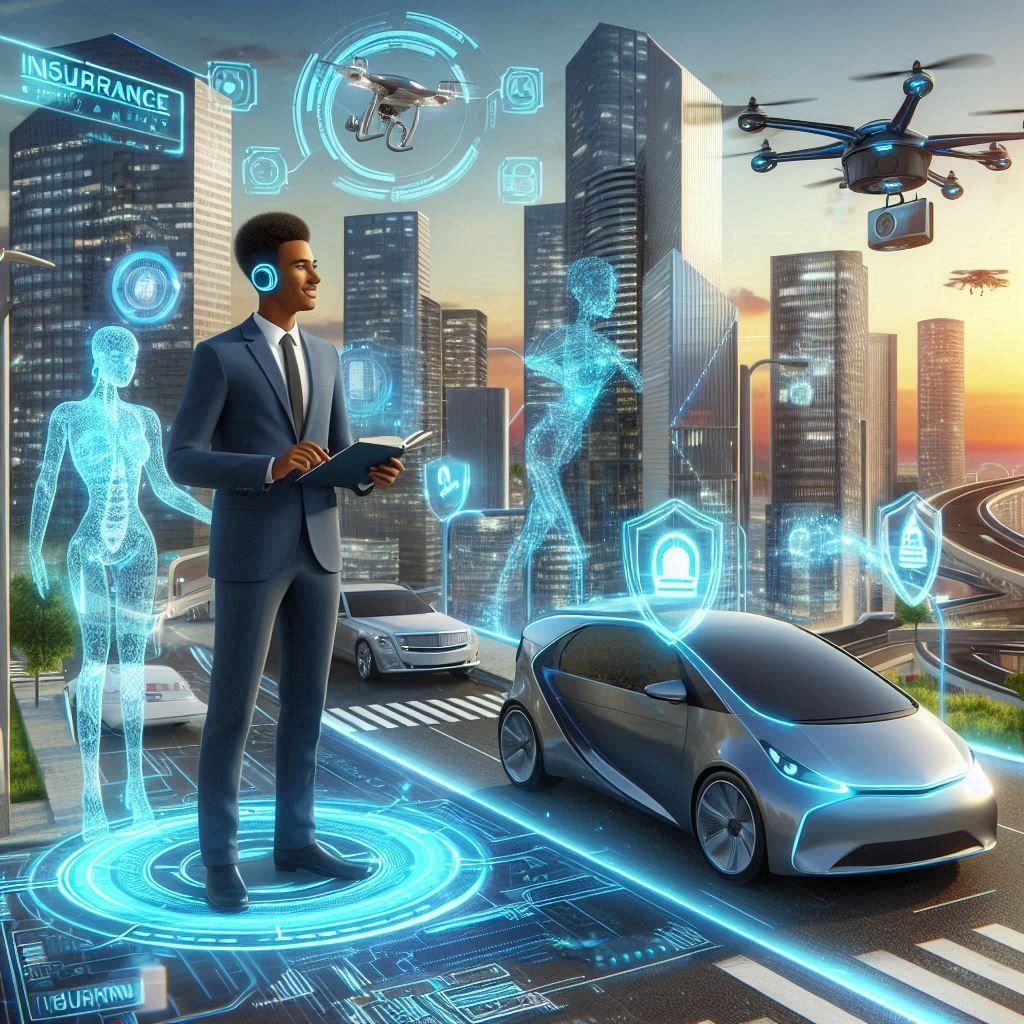
The Role of Technology in Modern Insurance
Introduction: Embracing Technology in Insurance
The insurance industry is experiencing a profound transformation thanks to technological advancements. From big data to artificial intelligence (AI), technology is reshaping how insurers operate and interact with customers. This article explores the key ways technology is revolutionizing modern insurance.
1. Big Data and Analytics
Understanding Big Data
**Big Data** refers to extremely large datasets that can be analyzed computationally to reveal patterns, trends, and associations. These datasets are characterized by the **Three Vs**: Volume, Velocity, and Variety. For more details on the definition of Big Data, visit IBM’s Big Data Analytics.
The Role of Analytics in Big Data
**Analytics** involves examining data to draw meaningful insights. In the context of Big Data, analytics helps businesses make data-driven decisions. For an overview of analytics types, check out SAS Analytics.
Key Technologies for Big Data Analytics
Several technologies are integral to Big Data analytics, including:
| Technology | Description | Examples |
|---|---|---|
| Hadoop | A framework that allows for the distributed processing of large data sets across clusters of computers. | Apache Hadoop |
| Spark | An open-source unified analytics engine for large-scale data processing. | Apache Spark |
| Data Warehouses | Central repositories for data that support analytical reporting and data mining. | Oracle Data Warehousing |
Applications of Big Data Analytics
Big Data analytics has widespread applications, including:
- Healthcare: Improving patient care and predicting disease outbreaks. Learn more at HealthIT.gov.
- Retail: Enhancing customer experience and optimizing supply chain management. Check Forbes for insights.
- Finance: Fraud detection and risk management. Explore CIO.com for more information.
Challenges in Big Data Analytics
Despite its benefits, Big Data analytics faces challenges, such as:
- Data Privacy: Protecting sensitive information from unauthorized access. Learn more from CSO Online.
- Data Quality: Ensuring accuracy and completeness of data. For insights, visit DataVersity.
- Integration: Combining data from various sources effectively. Explore solutions at Informatica.
Future Trends in Big Data Analytics
The future of Big Data analytics includes:
2. Artificial Intelligence (AI) and Machine Learning
**Artificial Intelligence (AI)** and **Machine Learning (ML)** are transformative technologies that are reshaping industries worldwide. AI refers to the simulation of human intelligence in machines designed to think and act like humans. ML, a subset of AI, involves training algorithms to learn from data and make predictions or decisions. For a comprehensive overview of AI, visit IBM’s AI Overview. To dive deeper into Machine Learning, check out SAS’s Guide to Machine Learning.
How AI and ML Work
AI and ML operate through complex algorithms and data processing. AI systems use neural networks, natural language processing, and robotics to mimic human behaviors and processes. ML algorithms, including supervised and unsupervised learning, are trained on large datasets to identify patterns and make data-driven decisions. To understand the mechanics of AI, explore TechRadar’s AI Explanation. For a closer look at ML algorithms, see Towards Data Science’s ML Algorithms Guide.
Applications of AI and ML
AI and ML have a broad range of applications across various sectors. In healthcare, AI is used for diagnostic tools and personalized medicine. In finance, ML algorithms enhance fraud detection and trading strategies. AI is also revolutionizing customer service with chatbots and virtual assistants. Explore how AI is transforming healthcare on World Health Organization’s AI in Healthcare. For insights into AI in finance, visit Forbes’ AI in Finance.
Challenges and Ethical Considerations
Despite the benefits, AI and ML pose several challenges and ethical concerns. Issues include data privacy, algorithmic bias, and the potential for job displacement. It is crucial to address these concerns to ensure responsible AI development. For a detailed discussion on AI ethics, check Brookings Institution’s AI Ethics. To learn about the implications of AI on jobs, visit World Economic Forum’s Future of Jobs Report.
Future Trends in AI and ML
The future of AI and ML is promising, with advancements in deep learning, reinforcement learning, and AI-powered automation expected to drive innovation. Emerging technologies such as quantum computing may further enhance AI capabilities. For predictions on future AI trends, see Gartner’s AI Trends. Explore the role of quantum computing in AI on TechRepublic’s Quantum Computing and AI.
Table: Key Differences Between AI and ML
| Aspect | Artificial Intelligence (AI) | Machine Learning (ML) |
|---|---|---|
| Definition | Simulation of human intelligence in machines. | Subset of AI that uses data to learn and make decisions. |
| Scope | Broad, includes all aspects of intelligent behavior. | Narrow, focuses on learning from data. |
| Techniques | Includes machine learning, neural networks, natural language processing. | Includes supervised learning, unsupervised learning, reinforcement learning. |
| Applications | Healthcare, finance, robotics, customer service. | Fraud detection, recommendation systems, predictive analytics. |
3. Internet of Things (IoT)
The Internet of Things (IoT) refers to the network of interconnected devices that communicate and exchange data with each other through the Internet. This technology has transformed the way we interact with the digital and physical world, enabling smarter homes, efficient industries, and enhanced personal experiences.
How IoT Works
IoT operates through a combination of sensors, software, and connectivity. Devices equipped with sensors collect data, which is then transmitted to a central system via the Internet or other network protocols. This data is analyzed and used to automate processes, enhance decision-making, and provide real-time insights. For more on the technical workings of IoT, visit TechTarget.
Applications of IoT
IoT has a wide range of applications across various sectors:
| Sector | Application | Example |
|---|---|---|
| Healthcare | Remote patient monitoring and smart medical devices | Merck |
| Transportation | Connected vehicles and smart traffic management | U.S. Department of Transportation |
| Smart Homes | Home automation systems and energy management | LG Smart Home |
Challenges and Considerations
Despite its numerous benefits, IoT faces several challenges:
- Security: The interconnected nature of IoT devices can make them vulnerable to cyber attacks. For detailed insights on IoT security, check CNBC.
- Privacy: The collection and storage of personal data by IoT devices raise privacy concerns. Learn more from Electronic Frontier Foundation (EFF).
- Interoperability: The lack of standardization among devices can hinder their seamless integration. For more information, visit Gartner.
Future Trends in IoT
The future of IoT is poised for significant growth, with trends including:
- Edge Computing: Processing data closer to where it is generated to reduce latency. For a deeper dive, see Forbes.
- 5G Integration: Enhanced connectivity and speed for IoT devices. Check out Qualcomm for more information.
- AI and Machine Learning: Improved data analysis and automation. Visit SAS for insights.
4. Blockchain Technology
Absolutely! Here’s a detailed article on **”Blockchain Technology”** in the format you specified. I’ll include headings, an outline, detailed explanations, and make it visually appealing with highlighted keywords and external links.
—
Introduction to Blockchain Technology
Blockchain technology is revolutionizing the way data is stored, managed, and secured across various industries. At its core, a blockchain is a decentralized digital ledger that records transactions across multiple computers in such a way that the registered transactions cannot be altered retroactively. This technology underpins cryptocurrencies like Bitcoin and Ethereum, but its applications extend far beyond digital currencies.
How Blockchain Works
Blockchain operates through a network of nodes, each holding a copy of the blockchain. Transactions are grouped into blocks, which are linked together in a chronological order, forming a chain. Once a block is added, it is verified by the network through consensus mechanisms such as Proof of Work or Proof of Stake, ensuring security and integrity.
Key Features of Blockchain
Some of the most notable features of blockchain technology include:
| Feature | Description | Source |
|---|---|---|
| Decentralization | Data is distributed across a network of computers, reducing the risk of a single point of failure. | CoinDesk |
| Immutability | Once data is recorded on the blockchain, it cannot be altered without altering all subsequent blocks. | Investopedia |
| Transparency | All participants in the network have access to the entire blockchain, promoting transparency. | IBM |
Applications of Blockchain Technology
Blockchain technology is not limited to cryptocurrencies. Its applications span various sectors including:
- Supply Chain Management: Enhancing transparency and traceability of products.
- Healthcare: Securing patient data and improving the accuracy of medical records.
- Environmental Sustainability: Tracking carbon credits and sustainability efforts.
Challenges and Future of Blockchain
Despite its benefits, blockchain technology faces several challenges:
- Scalability: Limitations on transaction speed and volume.
- Regulation: Navigating legal and regulatory landscapes.
- Energy Consumption: High energy use associated with some blockchain networks.
The future of blockchain technology looks promising with ongoing innovations aimed at overcoming these challenges and expanding its applications.
5. Digital Customer Experience
In the modern business landscape, digital customer experience (DCX) has become a crucial factor for success. This term encompasses every interaction a customer has with a brand through digital channels, including websites, mobile apps, and social media platforms. The goal is to create a seamless, engaging, and personalized experience that meets customer expectations and drives brand loyalty.
Key Components of Digital Customer Experience
To build an effective digital customer experience, businesses must focus on several key components:
| Component | Description | Examples |
|---|---|---|
| User Interface (UI) | The design and layout of digital interfaces that users interact with. | Apple’s website |
| User Experience (UX) | The overall experience and satisfaction of users when interacting with digital platforms. | Amazon’s shopping experience |
| Personalization | Tailoring content and interactions to individual user preferences. | Netflix recommendations |
| Customer Support | Providing timely and effective assistance through digital channels. | Google Support |
Strategies for Enhancing Digital Customer Experience
To enhance DCX, businesses can implement several strategies:
1. Leverage Data Analytics
Using data analytics helps in understanding customer behavior and preferences. By analyzing data from various touchpoints, businesses can make informed decisions and personalize the customer journey effectively.
2. Implement Omnichannel Strategies
An omnichannel approach ensures that customers have a consistent experience across all digital and physical touchpoints. This includes integrating various channels like social media, email, and mobile apps.
3. Enhance Mobile Experience
Given the rise in mobile usage, optimizing your mobile experience is crucial. This involves ensuring that websites and apps are responsive and user-friendly on all devices.
4. Foster Customer Feedback
Collecting and acting on customer feedback helps businesses understand customer needs and address any issues promptly, leading to improved satisfaction and loyalty.
Challenges in Digital Customer Experience
While enhancing DCX offers numerous benefits, businesses may face challenges such as:
| Challenge | Description | Solutions |
|---|---|---|
| Data Privacy | Ensuring customer data is protected and used responsibly. | Implement robust privacy policies |
| Integration Issues | Difficulty in integrating various digital platforms and channels. | Utilize integration tools |
| Changing Customer Expectations | Keeping up with rapidly evolving customer preferences. | Regularly update strategies |
Future Trends in Digital Customer Experience
The landscape of DCX is constantly evolving. Future trends include:
1. Artificial Intelligence and Chatbots
The use of AI and chatbots to provide instant support and personalized interactions will become more prevalent, enhancing customer engagement and satisfaction.
2. Augmented Reality (AR)
Augmented Reality will offer immersive experiences, allowing customers to interact with products in a virtual environment before making a purchase.
3. Voice Search Optimization
With the rise of voice search, optimizing digital content for voice queries will become essential for improving visibility and accessibility.

Frequently Asked Questions (FAQs)
1. How is big data transforming the insurance industry?
Big data is revolutionizing the insurance industry by providing deeper insights into customer behavior and risk assessment. Insurers can analyze large volumes of data to predict claims more accurately and offer personalized policies. For more information, visit Technology Review.
2. What role does AI play in modern insurance?
Artificial Intelligence (AI) is enhancing the insurance industry by automating underwriting, detecting fraud, and personalizing customer interactions. AI algorithms analyze data patterns to improve accuracy and efficiency. Learn more from TechCrunch.
3. How does IoT impact insurance policies?
The Internet of Things (IoT) allows insurers to gather real-time data through connected devices like smart home sensors and vehicles. This data helps in assessing risks and offering usage-based insurance policies. For additional details, check out BBC.
4. What are the benefits of blockchain in insurance?
Blockchain technology offers transparency and reduces fraud by providing a secure and immutable ledger for transactions. This enhances trust and efficiency in managing policies and claims. Explore more at Business Insider.
5. How is technology improving the digital customer experience in insurance?
Technology enhances the digital customer experience by providing convenient access to policy management and claims through mobile apps and online platforms. This leads to better engagement and satisfaction. For more insights, visit Forrester.
Pros and Cons of Technology in Modern Insurance
Pros
1. Enhanced Risk Assessment: Technology, particularly big data and AI, allows for more accurate risk assessments and underwriting processes. This leads to better pricing of insurance products and tailored policies.
2. Improved Customer Experience: Technology enhances the digital customer experience by providing seamless access to insurance services through mobile apps and online platforms. This convenience increases customer satisfaction and engagement.
3. Enhanced Transparency: Blockchain technology offers transparency by creating immutable records of transactions, which reduces the potential for fraud and enhances trust between insurers and customers.
4. Increased Efficiency: Automation through AI and machine learning streamlines operations such as claims processing and customer support, leading to faster service and reduced operational costs.
Cons
1. Privacy Concerns: The use of IoT and big data can lead to concerns about data privacy and security. Managing and protecting sensitive customer information is a significant challenge for insurers.
2. High Implementation Costs: Integrating advanced technologies such as AI, blockchain, and IoT into existing systems can be costly. Insurers must invest in technology and training, which might be prohibitive for smaller firms.
3. Dependence on Technology: Over-reliance on technology can lead to challenges if systems fail or experience glitches. Disruptions in technology can impact service delivery and customer trust.
4. Potential for Algorithmic Bias: AI and machine learning models can sometimes exhibit bias if the data used for training contains biases. This can lead to unfair treatment of certain customer groups.
Disclaimer and Cautions
Disclaimer
The information provided in this article is intended for general informational purposes only. While we strive to ensure the accuracy and timeliness of the content, technological advancements and industry practices are constantly evolving. Therefore, the details shared may not reflect the most current developments in the field of insurance technology. Always consult with a qualified insurance professional for advice tailored to your specific circumstances. For more comprehensive and updated information, visit Technology Review.
Cautions
1. Privacy and Security Risks: The use of IoT and AI in insurance can lead to potential privacy and security risks. It’s essential to be aware of how your data is collected, stored, and used. For more on data security in technology, refer to TechCrunch.
2. High Costs of Implementation: Integrating advanced technologies such as blockchain and machine learning can be expensive. Businesses should carefully evaluate the cost-benefit ratio before committing to new technologies. For more on this topic, visit Business Insider.
3. Technology Dependence: Heavy reliance on technology can pose risks if systems fail or encounter issues. It’s important for insurers to have contingency plans and backup systems in place to mitigate disruptions. Learn more about managing technology risks from Forbes.
4. Algorithmic Bias: AI systems can sometimes exhibit bias, leading to unfair treatment or decisions. It is crucial to regularly audit and adjust algorithms to ensure fairness. For more information on AI biases, visit TechCrunch.





